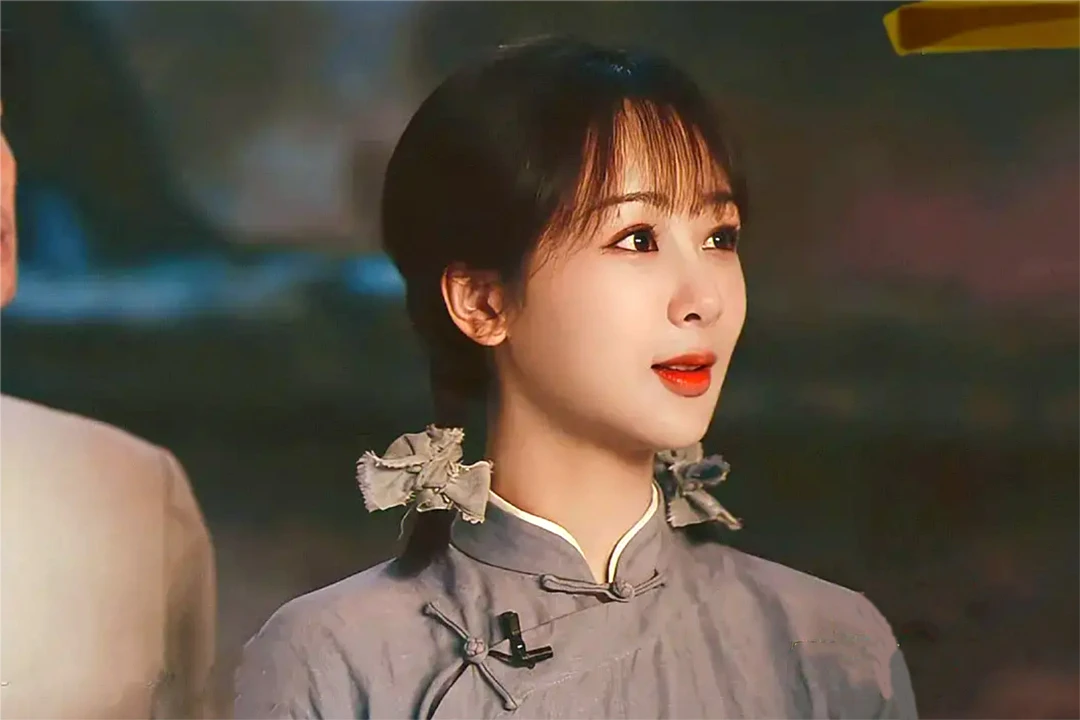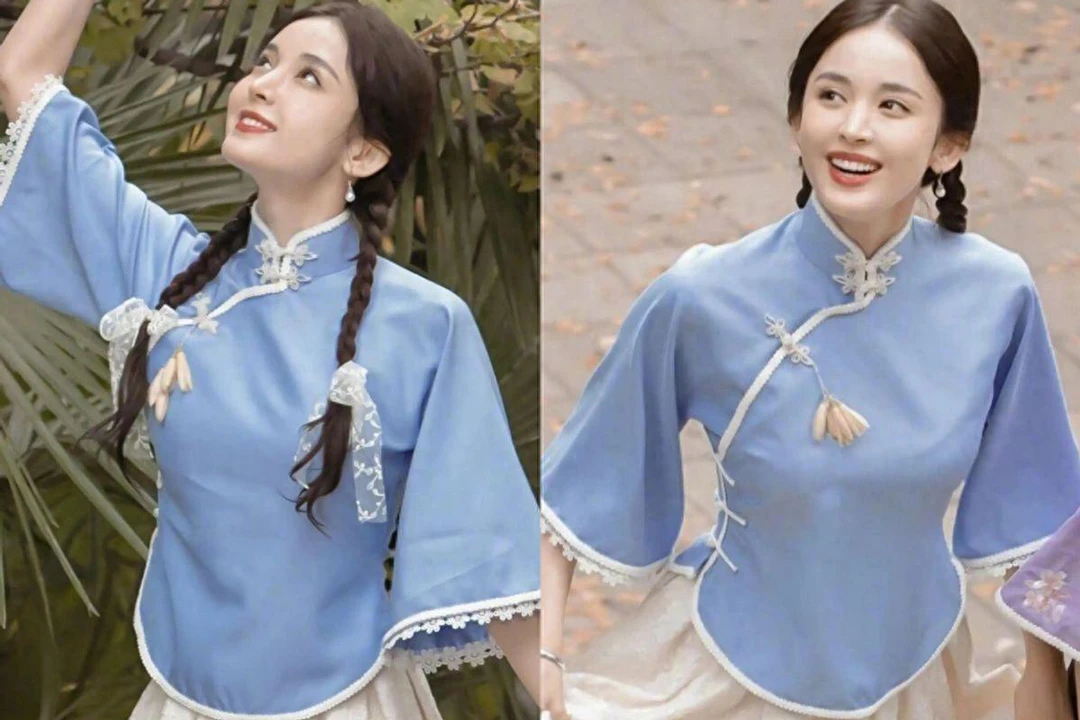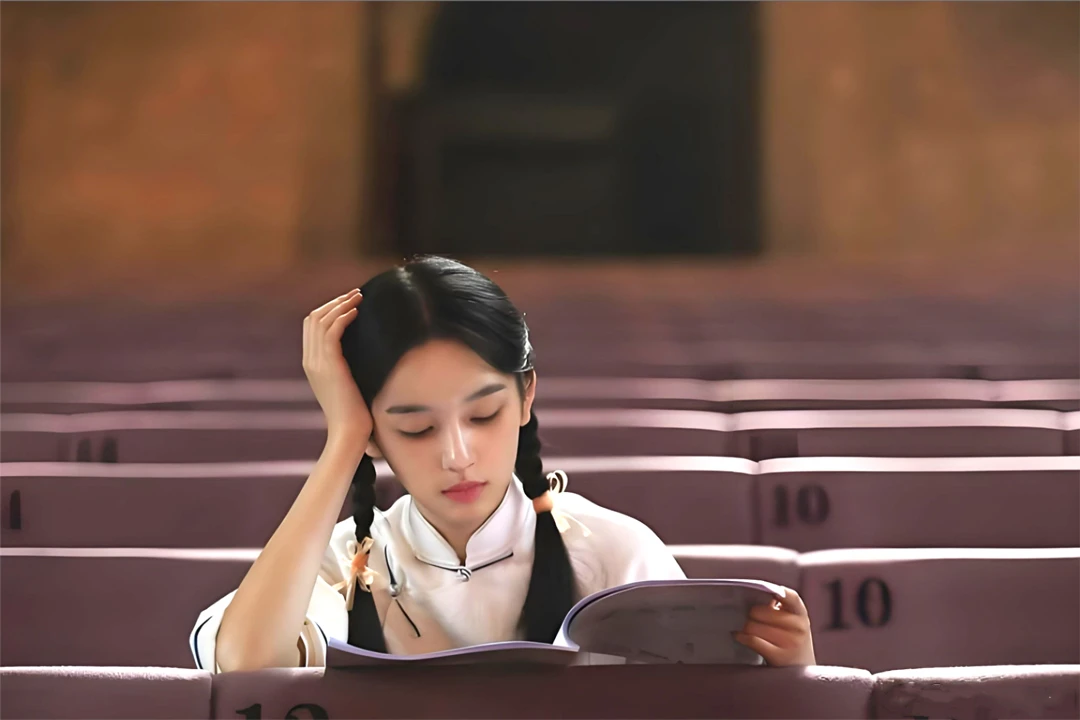The dream of youth, accompanied by a blue garment. During the Republic of China era, the simplicity and elegance of the blue student uniform became the embodiment of a pure and innocent time in the minds of a generation. In film and television works that recreate that tumultuous period, many actresses have captured a unique charm through the simple blue and white student attire.
In the misty haze, a figure in a blue student uniform slowly emerges from the horizon. With a light step, a plain skirt, and an innocent face, she resembles a budding lotus flower. This is none other than the popular young actress Yang Zi, exuding the youthful vitality of her college years. The appearance of youth is just like this: a gentle and pure lady from a respectable family.
The mischievous Gulnazar also makes a strong impression. Her long skirt, featuring a blue floral pattern on a white background, is like a blooming gesang flower, concealing an exotic charm beneath its serene and elegant exterior. Her twin ponytails sway gently against her forehead, like gossamer floating in the morning light. “Purity and wildness blend seamlessly in her, as if a princess and a nomadic girl have merged into one.”
A blue garment sways gracefully in the gentle breeze, exuding an intellectual and refined air. Wearing it is Zhou Ye, whose fresh and ethereal temperament seems to transcend the barriers of time and space. Like a breath of spring, she evokes the words of the Song Dynasty poetess Li Qingzhao: “Light or heavy makeup, it all suits her well.”
Lin Xinru undoubtedly best fits the traditional image of a lady from a respectable family. The blue top paired with a black skirt, adorned with two low-hanging ponytails, highlights the shy and girlish sentiment. Her face is adorably charming, and her eyes sparkle with a hint of intelligence and spirit, like an immortal banished to the mortal world.
Zhou Xun’s chic outfit when portraying Lin Huiyin has become a classic representation of the intellectual image. The somber blue garment cannot conceal the free and easy scholarly aura that surrounds her. With eyes that seem to contain the essence of all creation, she is the embodiment of a talented beauty.
Jiang Qinqin possesses a strong classical aura, and wearing the blue top and white skirt only adds to her charm that evokes memories of the past. Her light makeup cannot hide the clarity in her eyes, and the slight furrowing of her brows reveals a touch of melancholy, reminiscent of the talented women who read and recited poetry in the boudoirs of old.
The blue student uniform, with its simple and unadorned appearance, has become a symbol of the purity and innocence of youth. When worn by these actresses, it not only showcases their unique temperaments and charms but also connects them to the historical context of the Republic of China era. Through their performances, they bring to life the stories and emotions of that time, allowing modern audiences to catch a glimpse of the dreams and aspirations of a bygone age.
The Republic of China era was a time of great change, as traditional Chinese society began to embrace new ideas and influences from the West. The student uniform, with its distinctive blue and white color scheme, became a powerful symbol of this transitional period, representing the hopes and dreams of a generation seeking to forge a new identity for themselves and their nation.
For the actresses who don these uniforms on screen, the challenge is to capture not only the physical appearance of the students of that era but also the spirit and essence of their lives. Through their performances, they must convey the sense of innocence and idealism that characterized the youth of that time, while also hinting at the underlying tensions and conflicts that shaped their world.
Yang Zi’s portrayal of a college student in the drama “Youth” is a prime example of how an actress can embody the essence of the Republican-era student. With her gentle demeanor and pure, unaffected air, she captures the innocence and optimism of a young woman on the cusp of adulthood, eager to embrace the possibilities of a new era. At the same time, her performance hints at the deeper complexities of her character, suggesting the inner strength and resilience that will carry her through the challenges to come.
Similarly, Gulnazar’s portrayal of a student in the drama showcases the way in which the Republican-era uniform could be adapted to suit different personalities and styles. With her exotic beauty and mischievous charm, she brings a unique flair to the classic blue and white ensemble, suggesting a character who is both rooted in tradition and open to new experiences.
Zhou Xun’s portrayal of Lin Huiyin, the celebrated architect and writer, offers a different take on the Republican-era student image. With her intellectual air and sophisticated manner, she embodies the ideal of the modern, educated woman, confident in her abilities and unafraid to challenge the status quo. Through her performance, she reminds us of the vital role that women played in shaping the cultural and intellectual life of the Republican era.
Ultimately, the enduring appeal of the Republican-era student uniform lies in its ability to evoke a sense of nostalgia and longing for a simpler, more innocent time. For modern audiences, these actresses’ portrayals of students from that era offer a glimpse into a world that has long since vanished, but whose ideals and aspirations continue to resonate with us today.
At the same time, these performances also serve as a reminder of the enduring power of fashion and style to shape our perceptions of history and identity. Through their careful attention to the details of the Republican-era uniform, these actresses help to create a vivid and immersive sense of the past, allowing us to feel a connection to the lives and experiences of those who came before us.
In conclusion, the actresses who take on the challenge of portraying Republican-era students on screen are not simply playing a role, but are also serving as ambassadors for a crucial period in Chinese history. Through their performances, they help to keep alive the memory of a time when the nation was on the brink of great change, and when the dreams and aspirations of a generation were embodied in the simple, yet elegant, blue and white student uniform.
Whether capturing the innocence and purity of youth, or the intellectual and artistic spirit of the era, these actresses remind us of the enduring power of fashion and style to shape our understanding of the past, and to inspire us to create a better future.



